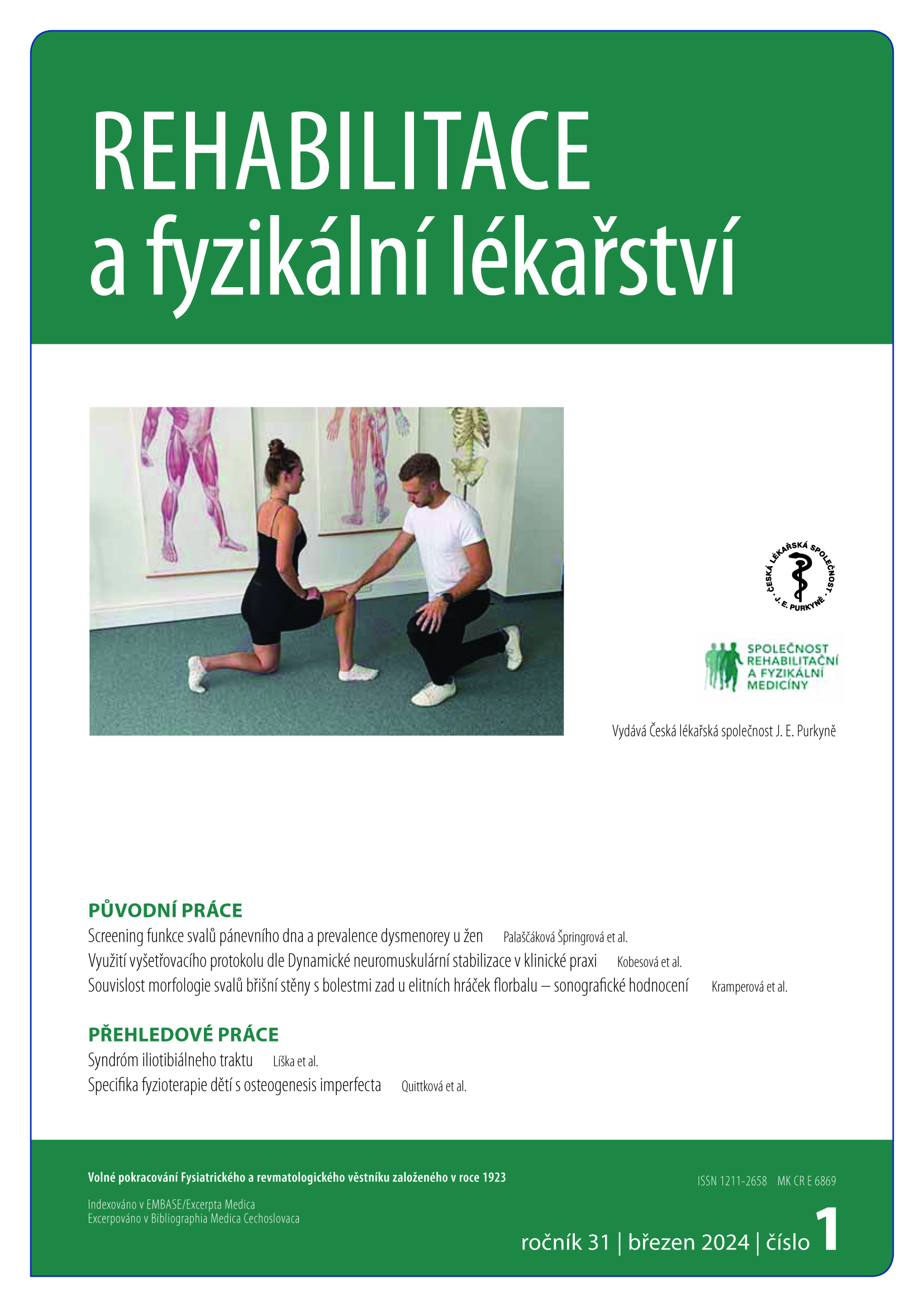Iliotibial band syndrome
Keywords:
iliotibial band syndrome, pain, diagnosis, rehabilitationAbstract
Summary: The most common symptomatic manifestation of iliotibial band syndrome (ITBS) includes pain in the lateral part of the knee, which is associated with repetitive movement activities. Patients often describe pain in the area around the lateral femoral epicondyle, which can radiate down the iliotibial direction into the tibia. In the proximal part of the thigh, the iliotibial tract (ITB) receives fascial parts from the deep fascia of the thigh, gluteus maximus, and tensor fasciae latae. ITBS is often successfully treated with non-operative management, although surgery is sometimes required. The etiology of ITBS has been the subject of controversial discussions. Various etiologies have been proposed for ITBS, including friction of the ITB against the lateral femoral epicondyle, compression of the adipose tissue and the connective tissue, and chronic inflammation of the ITB bursa. ITBS is a diagnosis based on clinical presentation. Local tenderness of the lateral part of the knee below the epicondyle and above the joint line is an important finding during physical examination. Rehabilitation in patients with ITBS is an important part of comprehensive treatment that plays a key role in the therapy of ITBS.

